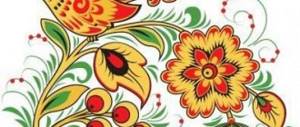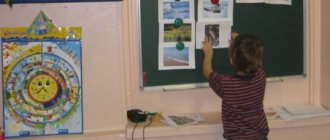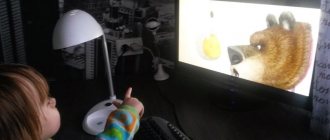Educational potential of a museum excursion: theoretical and applied aspects
Bibliographic description:
Makeeva, I. A. Educational potential of a museum excursion: theoretical and applied aspects / I. A. Makeeva.
— Text: direct // Pedagogical skills: materials of the II International. scientific conf. (Moscow, December 2012). - Moscow: Buki-Vedi, 2012. - pp. 175-178. — URL: https://moluch.ru/conf/ped/archive/65/3161/ (access date: 10.10.2020). The educational work of museums, constituting the most important element of museum communication, is aimed at the formation of a harmoniously developed, socially active personality, at its moral and aesthetic education, deepening awareness and education.
Today there is practically not a single museum that does not build its activities primarily on the basis of excursions, since excursions are one of those traditional forms with which the formation of the cultural and educational activities of the museum began. B.A. Stolyarov defines an excursion as a form of educational (outreach) activity, the content of which is a complex (visual, verbal, emotional) perception of the visual objects offered by the excursion route in order to acquire knowledge and impressions [1, P.127].
Forming a museum excursion and making it the main form of work with the audience was a rather complex and lengthy process. The concept of “excursion” came into scientific use in the 19th century. and became entrenched in the educational environment mainly in connection with the implementation of the principle of visibility in teaching. The excursion as a form of the educational process was enshrined in the “School Charter” adopted in Russia in 1804, which indicated the need for walks in nature, to craft workshops, etc., and since then it has been actively used in domestic school as one of the most democratic forms of education, helping to acquire new knowledge and impressions [2].
The beginning of a theoretical understanding of the experience of pedagogical work in Russian museums was marked by the publication of the Excursion Bulletin, a special issue of which in 1916 was entirely devoted to the work of museums with schoolchildren. A special place among the publications was occupied by the article by the curator of the Rumyantsev Museum in Moscow N. I. Romanov “On the tasks and methods of art excursions,” in which the author expressed the idea that the process of learning art should be preceded by a deep understanding of its influence on the human soul. A work of art should be studied as an aesthetic object in its own right, and not as an application to cultural history or general history. N. Romanov considered an aesthetic excursion as a means of communication with the original, the task of which is to “introduce the viewer into a series of aesthetic experiences and give a serious, in-depth analysis of a famous work” [3, P.10]. Being an opponent of sightseeing tours focused on a cursory acquaintance with the museum, the scientist recommended including a small number of works in the tour, which allows solving a number of methodological problems: facilitating the experience of the perceived work; based on the viewer’s experiences, find out the features of the artistic form of the work and its style; consolidate the results of the excursion in the minds of the audience through independent work.
Through the efforts of representatives of the Russian excursion school I. M. Grevs, N. P. Antsiferov, N. A. Geinike, B. E. Raikov, A. V. Bakushinsky, A. Ya. Zaks and others, an excursion method based on a combination of a number of features: the primacy of the visual impression, the predominance of showing over telling, motor, thematic, activation of the audience [4,5,6]. Museum excursions have come a long way in their development: from educational to propaganda and ideological in the 1930s–1980s; in the early 1990s In connection with the new democratic aspirations of Russian society, the excursion in its old ideological form becomes uninteresting to the museum visitor and turns out to be unclaimed for some time. However, already at the end of the 1990s. Attention to this museum form of work is increasing, especially in provincial local history museums.
Currently, the excursion is one of the most actively developing forms of museum activity. This is explained, first of all, by the fact that a museum excursion has the most important feature that determines its prospects - reliance on a museum object, interaction with a museum object, the use of its potential in the development of cultural heritage, the introduction of knowledge about specific museum exhibits into the communicative museum process, which seems to be one of the fundamental features of a museum excursion. It is this property of the excursion that determines its truly museum character, which determines the highest degree of its “museum quality”, giving the right to characterize a museum excursion as the basic form of museum-pedagogical activity in the museum.
The content of excursion activities, the nature of the museum’s contacts with children and adolescents, and the motivation for visiting them are determined by the age and psychological characteristics of primary and secondary schoolchildren and adolescents.
Working with preschoolers and primary schoolchildren is relevant and most difficult - it is necessary to introduce the museum into the sphere of the child’s life interests, teach them to use the museum both as a source of knowledge and as a place for recreation and entertainment, give an understanding of the role of museums in world culture, teach them to recognize historical monuments and culture. Children at this age, not having the ability for abstract thinking, are receptive to specifics, show great interest in a detailed consideration of the subject, therefore it is necessary to develop memory, imagination, associative thinking, to develop skills of observation, visual literacy, and understanding of the language of fine art. Practice shows that the earlier work begins to introduce children to the museum, the more noticeable the social and pedagogical effect will be. It should be noted that the work of the museum with preschoolers and primary schoolchildren allows us to solve the problem of preparing future visitors, for whom visiting the museum will be an integral part of life.
In excursion work with children of this age, as well as in work with preschoolers, the most effective form of excursion is a dialogue, the widespread use of didactic games, developmental exercises, and creative tasks. You can place more emphasis (in comparison with preschoolers) on verbal forms of expressing impressions of a work than on visual practice (small essays, playing as a tour guide, playing as a museum employee, collector, talking about your home collection, etc.). Considering the fact that the younger schoolchild’s attitude to the world around him becomes more meaningful, it is necessary during the excursion to pay attention to the formation of value orientations through the means of art and the conscious acquisition of skills to comprehend the world of culture through a museum monument. The general goal of this kind of excursions can be considered the formation of museum culture, that is, awareness of the value potential of the museum, the internal need to visit museums, and respect for museum objects as part of material and spiritual culture.
It follows that the direction of museum activity requires a space adapted to work with this audience - such a space should be a gaming museum. The greatest interest among children of primary school age is excursions with game elements and creative tasks; excursions aimed at the presentation of one exhibit, which help to get to know a particular museum item deeply and comprehensively; interactive excursions with riddles; filling out museum dictionaries (which contain drawings, collages, applications, etc.). To ensure dialogue during the excursion, “centers of surprise” are created, generating questions and the need to answer them independently. The pedagogical position of a museum teacher is focused not so much on communicating information, but on developing a culture of dialogue, self-determination, and abilities in children. It is important for the guide to organize children’s activity, including speech, ensuring that they are able to listen to a question, give their own answers, choose the right one, and ask their own.
Middle and high school students tend to focus on increasing positive knowledge and developing spectator co-creation, so it is necessary to use museum excursion techniques that encourage communication and interaction. The older the children, the greater the desire to independently explore the museum space. Adolescents develop a conscious need for self-education, broadening their horizons, and increasing their competence. In addition, the consciousness of adolescents is characterized by a certain inconsistency; receptivity to the new is taken into account with the desire to critically comprehend the experience of elders, which results in a special need for convincing argumentation and breadth of information [7, P.20]. In a museum, such a compelling argument is the original – the primary source of knowledge.
However, reliance on the original alone is not a sufficient guarantee of persuasiveness. In working with schoolchildren, a method called problem-based can be extremely effective, when a situation is created of “conquering” knowledge, but not receiving it in finished form. This means that, for example, on an excursion you should avoid making statements in the presentation of the material. On the contrary, it is important to encourage schoolchildren to strain their mental strength, solve problems, extracting knowledge from the original source. For middle and older schoolchildren, dialogue, confidential intonation, and conversation that encourages joint discussion of certain topics are especially necessary. “Let's think... Let's imagine that... Does anyone know how... - these could be invitations to serious mental work before the guide explains the line of reasoning to the group, using a hint and the visitors' answers. At the same time, the master guide will always emphasize his readiness to acknowledge the erudition of his interlocutors, formulating questions as follows: “You, of course, remember?..”, “You most likely know?..”, “You probably already guessed?..” ." etc. [8]. When working with middle-aged and older students, museum forms of interactive orientation are effective: excursions with elements of conversation, theatrical excursions, independent excursions (without a guide) using a guidebook with questions and assignments; “information sheets” and “activity sheets” for schoolchildren. The use of interactive techniques allows you to create a special museum-educational environment in the museum, for which the key words are “I myself”: I act, I think, I make decisions. When designing an interactive environment, the guide (museum educator) must think about how the visitor’s interaction with the perceived material can be organized. In other words, he must ask himself the question of what the visitor will do in this space: what to participate in (hence the term “participating exhibitions”), what actions to perform, how to demonstrate his intelligence and other qualities.
T.V. Galkina notes that exhibitions and programs built using the principle of interactivity are multifunctional in nature, opening up for children a free space for choosing behavior in the museum, detailed study (even disassembly!) of exhibits, participation in the program, cooperation with museum teachers, communication with each other [9].
The excursion is aimed at meeting the knowledge needs of audiences of different age and educational levels, for various reasons, who came to the museum, having different degrees of preparedness, and involves significant preparatory work, adherence to certain methodological techniques in working with children. The comparative weakness of voluntary attention and rapid fatigue prevent them from standing for a long time at the museum display case, looking at a large number of exhibits, and absorbing more and more new information. That is why, when working with a children’s audience, it is important to know very clearly how long the excursion will take, what is planned to be shown to them and to what extent.
The stages of preparing an excursion can be presented as follows.
The first corresponds to the field of activity of the guide as a researcher who, when preparing an excursion, must formulate its name and determine the target orientation, study sources and literature, make the necessary extracts, compile a bibliography and card index.
At the second stage, the museum specifics of the work of a specialist are revealed, who needs to study the exhibition and select display objects (both main and additional), get acquainted with scientific descriptions and passports for selected exhibits, outline a route (taking into account the time of display of each object), and determine optimal techniques display, think through logical transitions from one object to another.
The work done is expressed in the text of the excursion (it is called individual, thesis, etc.). But in addition to it, it is recommended to draw up two more methodological documents. The first is an excursion plan (most often it is called a detailed one), in which the purpose of the excursion, topics and subtopics, their brief content, exhibits on display, and the time of their display are recorded in a condensed form. This plan is worked out in practice in the process of communication with the audience, after which a second final document is drawn up, which is called the methodological development of the excursion. It is built basically according to the same graphical scheme as the first document, but with a detailed list of methodological techniques used.
Children perceive information most effectively only in the first 15–20 minutes, after which a decline in attention follows. Therefore, if the excursion lasts 40–45 minutes, it is recommended to make its first half more information-rich, while the second half should include elements of play, children’s creative work, or motor relaxation. The latter can be directly related to the inspection of the exhibit (the guide invites the children to look at the large exhibit themselves - they walk around it, bend over, crouch, look inside), but it can become a kind of pause in the excursion. It is extremely important to remember that it is very difficult for children to stand in one place, so the time they stop at one display case should not be very long: usually it is 1-3 minutes.
In excursion work with children, the problem of selecting exhibits should be especially emphasized. The museum environment, as a rule, is extremely saturated, which causes the rapid onset of museum fatigue, especially in young children, so the number of objects on display should be limited to 7-10 exhibits, acting on the principle “less is more.”
In general, the method of working with children involves the constant organization of an audience. Solving seemingly purely organizational issues (what to pay attention to, how to position yourself near a stand or display case, at what pace to walk, how to ask questions), the guide, in essence, pursues a very important goal - the education of the museum culture of the little visitor.
The best form of consolidating and comprehending the impressions and knowledge gained during the excursion is creative work - the most natural way for children to master information. In many museums in foreign countries, it has become a tradition that every lesson with children ends in a studio where visitors can, for example, paint a Chinese plate, make a “real” Roman warrior’s helmet, taste rice with chopsticks, cook a dish according to an old recipe, etc.
Summarizing all of the above, we can conclude that excursion work with children allows us to solve the following main educational tasks:
- developing an understanding of the relationship between historical eras and one’s involvement in a new time, another culture through communication with historical and cultural monuments;
- formation of the ability to recreate the image of the corresponding era based on communication with cultural heritage, artistic perception of reality;
- development of the ability for aesthetic contemplation and empathy;
- identifying children's creative abilities;
- creating conditions for creative communication and cooperation.
Thus, to summarize, we can state that the educational tasks inherent in excursions of any type are: the formation of cognitive activity, communication skills, emotional culture and artistic taste; nurturing museum culture (compliance with the rules of behavior in the museum, respect for the museum monument, respect for the work of museum employees).
Literature:
- Stolyarov B.A. Museum pedagogy. History, theory, practice: Textbook. allowance. – M.: Higher School, 2004. – 216 p.
- Galkina T.V. Museum pedagogy: the communicative phenomenon of excursions as a basic museum-pedagogical form // Bulletin of the TSPU. 2010. Issue 4 (94). P.63-76.
- Romanov N.I. On the tasks and methods of art excursions // Excursion Bulletin. – 1916. No. 1. – P. 8-12.
- Grevs I.M. Long-distance humanitarian excursions and their educational meaning // Excursion business. – 1922. – No. 6. – P.17-21.
- Raikov B.E. Methods and techniques for conducting excursions. – Pg.: b.i., 1922. – 32 p.
- Geinike N.A. Cultural and historical excursions. Basic questions of methodology and methodology of cultural and historical excursions // Cultural and historical excursions. – M.: b.i., 1923. – Part 1. – P. 34-38.
- Children's Museum – a space of pedagogical experiment // Museum Studies. A child in the museum (Sociological and psychological-pedagogical aspects) - M.: APRIKT, 1993. - 115 p.
- Kokshayskaya O.N. Aesthetic aspects of a tour of the historical exhibition // Education of the younger generation in the museum: theory, methodology, practice: Sat. scientific tr. – M.: b.i., 1989. – P.81-89.
- Galkina T.V. Museum pedagogy: experience of innovative activities in the children's museum of Tomsk State Pedagogical University // Bulletin of TSPU. 2011. Issue 10 (112). – P.89-93





